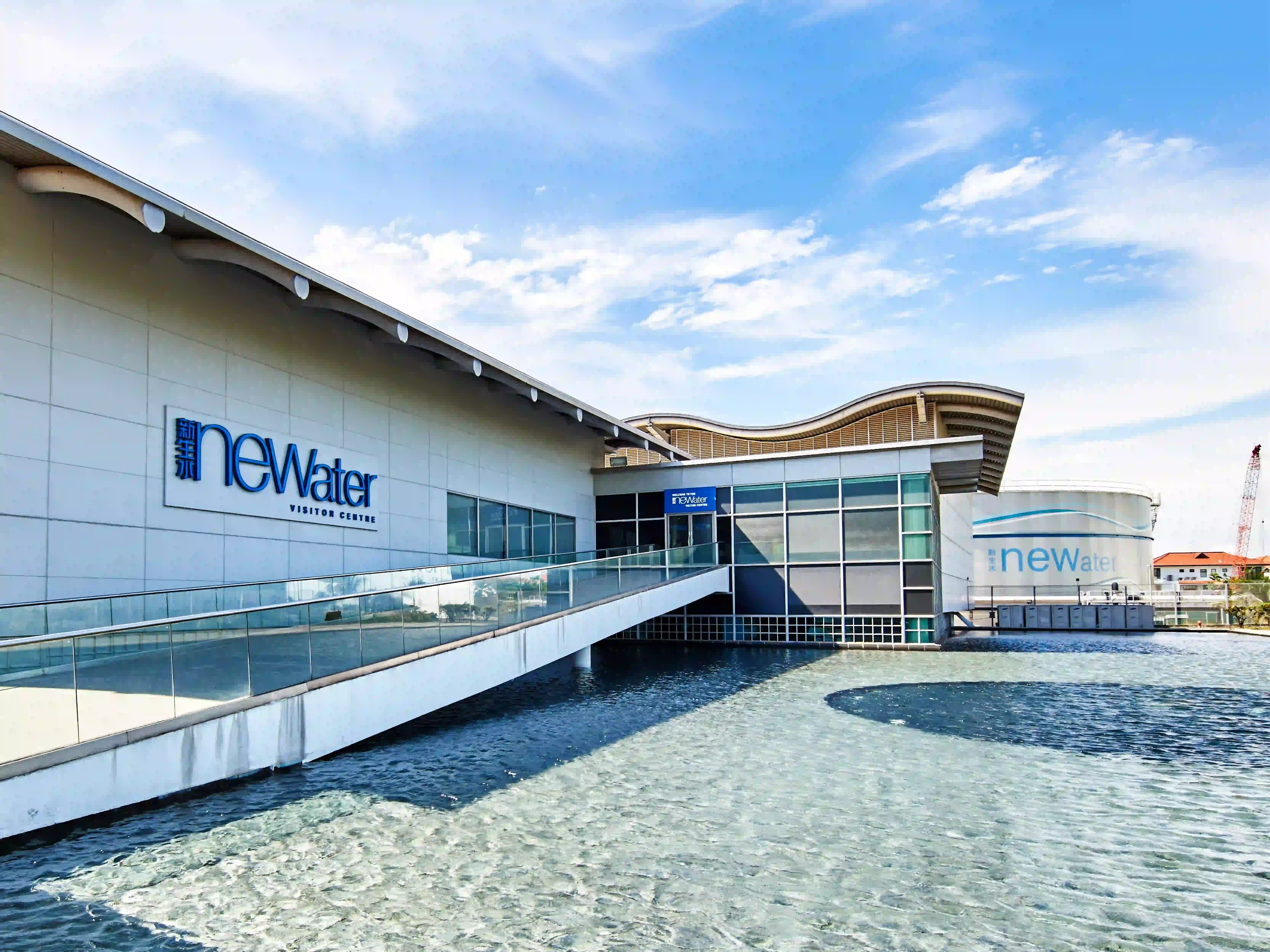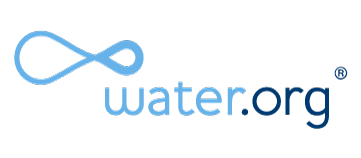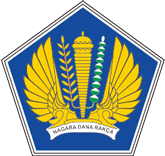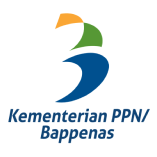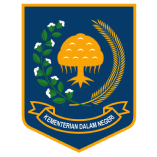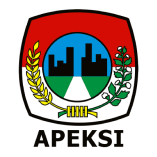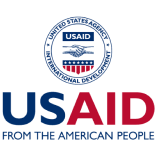NEWater Visitor Centre, Pilar Keberlanjutan Air di Singapura
2023-10-06 22:34:37 Dibaca : 1062Available in English
33/B-NUWSP/Oktober/2023
NEWater Visitor Centre adalah suatu pusat edukasi di Singapura yang memperkenalkan dan mempromosikan konsep keberlanjutan air. Di tempat ini, air buangan yang dihasilkan masyarakat akan diolah menjadi air yang aman untuk dikonsumsi. Bagaimana proses pengolahan air di NEWater Visitor Centre? Seperti apa perjalanan NEWater Visitor Centre? Dan apa perannya dalam mendukung keberlanjutan air? Mari simak penjelasan berikut.
Pengolahan Air di NEWater Visitor Centre
NEWater Visitor Centre menggunakan teknologi yang canggih untuk mengolah air buangan menjadi air yang aman dikonsumsi. Pada tahap awal, air buangan akan dikumpulkan dan diolah terlebih dahulu di water reclamation plant atau instalasi daur ulang air. Proses pengolahan air di water reclamation plant dapat dilihat pada gambar 1. Air yang telah diolah kemudian akan dikirim ke NEWater Visitor Centre dan menjalani proses pengolahan lanjutan. Pengolahan air di NEWater Visitor Centre terdiri dari 3 tahap yang meliputi mikrofiltrasi, reverse osmosis, dan desinfeksi ultraviolet seperti terlihat pada gambar 2 (PUB Singapore’s National Water Agency, 2016; 2023).

Gambar 1. Proses pengolahan air di water reclamation plant (PUB Singapore’s National Water Agency, 2016; 2023)

Gambar 2. Proses pengolahan air di NEWater Visitor Centre (PUB Singapore’s National Water Agency, 2023)
Pengolahan tahap pertama yaitu mikrofiltrasi. Pada tahap ini, air dilewatkan melalui membran untuk menyaring partikel mikroskopis dan bakteri. Selanjutnya, air dialirkan melalui tahap pengolahan kedua, yaitu reverse osmosis. Reverse osmosis memanfaatkan penggunaan membran semipermeabel dengan pori-pori yang sangat kecil. Membran tersebut memungkinkan molekul air untuk melewatinya sambil meninggalkan kontaminan, seperti virus, bakteri, logam berat, hidrokarbon aromatik, pestisida, dan lain-lain. Setelah melalui proses reverse osmosis, air sebetulnya I sudah memiliki kualitas yang tinggi. Namun, NEWater Visitor Centre memberikan langkah keamanan tambahan untuk menjamin kemurnian air yang diolah melalui proses disinfeksi ultraviolet (UV). Proses ini digunakan untuk menghilangkan bakteri dan virus yang tersisa dari dua proses sebelumnya (PUB Singapore’s National Water Agency, 2023).


Gambar 3. Rangkaian proses pengolahan yang meliputi: (a) water reclamation plant; (b) mikrofiltrasi; (c) reverse osmosis, dan (d) desinfeksi ultraviolet (PUB Singapore’s National Water Agency, 2016)
Perjalanan NEWater Visitor Centre
Sebelum berhasil melakukan daur ulang air secara masif, Singapura melakukan penelitian pada tahun 1970-an untuk menentukan kelayakan produksi air daur ulang. Hasil studi menunjukkan bahwa proses daur ulang air menggunakan teknologi membran secara teknis dapat dilakukan, namun memerlukan biaya yang tinggi. Pada waktu tersebut, keandalan teknologi membran juga belum terbukti. Di tahun 1990-an, teknologi membran meningkat pesat, baik dari segi biaya maupun bukti keandalannya, sehingga mulai banyak digunakan di berbagai negara (PUB Singapore’s National Water Agency, 2023).
Pada tahun 1998, Public Utilities Board (PUB) atau Badan Air Nasional Singapura membentuk tim untuk menguji penggunaan teknologi membran terbaru yang dinilai terbukti dapat mendaur ulang air untuk keperluan minum. Dua tahun setelahnya, perusahaan tersebut meresmikan instalasi percontohan yang dapat memproduksi 10.000 m3 air setiap hari. Serangkaian pengujian serta audit dilakukan pada air yang diproduksi. Hasilnya, air daur ulang NEWater dinilai sebagai sumber air yang aman dan berkelanjutan. Air ini juga memiliki kualitas yang baik karena memenuhi persyaratan air minum WHO (World Health Organization) dan US EPA (United States Environmental Protection Agency). Pada tahun 2003, Singapura secara resmi membuka dua instalasi NEWater pertama di Bedok dan Kranji serta NEWater Visitor Centre, sebuah museum air untuk memamerkan perjalanan Singapura menuju keberlanjutan air (PUB Singapore’s National Water Agency, 2022; 2023).
Peran NEWater dalam Mendukung Keberlanjutan Air
Ketersediaan air merupakan perhatian utama bagi Negara Singapura. Minimnya lahan dan padatnya penduduk membuat negara ini memiliki area resapan yang terbatas (Tan dan Rawat, 2018). Tak hanya itu, Singapura juga kekurangan sumber air tawar alami (Teo, 2019). Studi UNESCO pada tahun 2006 mengungkapkan bahwa Singapura berada pada peringkat ke-170 dari 190 negara berdasarkan ketersediaan air tawar yang dimilikinya (Khoo, 2009). Singapura diestimasi hanya mampu memenuhi 5% dari kebutuhan air nasionalnya secara mandiri (Paramitha, 2023).
Kondisi tersebut mendorong Singapura untuk menerapkan strategi bagi keberlanjutan air di sana. Keberlanjutan air mengacu pada ketersediaan air untuk keperluan domestik, pertanian, dan industri (Robeco, 2023). Strategi yang diterapkan Singapura dalam mendukung keberlanjutan air dinamakan “Four National Taps” yang meliputi (PUB Singapore’s National Water Agency, 2015):
1. Pemanfaatan air buangan melalui program NEWater;
2. Pemanfaatan air hujan melalui pembangunan reservoir yang dilengkapi dengan saluran drainase terintegrasi;
3. Pemanfaatan air laut melalui desalinasi air; dan
4. Pengimporan air bersih dari Malaysia.
Program NEWater merupakan salah satu pilar keberlanjutan air di Singapura. Saat ini, program NEWater telah melahirkan 5 instalasi termasuk di antaranya NEWater Visitor Centre (PUB Singapore’s National Water Agency, 2023). Pada tahun 2018, program NEWater telah berhasil memenuhi 40% dari kebutuhan air di Singapura (Malik, 2021). Menurut PUB Singapore’s National Water Agency (2023), sebagian besar air yang diproduksi melalui NEWater digunakan untuk keperluan industri dan pendingin udara di pabrik wafer, kawasan industri, dan bangunan komersial. Sebagian kecilnya akan dimanfaatkan secara tidak langsung untuk minum melalui pengisian reservoir selama musim kemarau. Air baku dari reservoir nantinya akan diolah terlebih dahulu sebelum dialirkan ke konsumen sebagai air keran.
Tak hanya berkontribusi dalam ketersediaan air di Singapura, program NEWater juga berupaya untuk mengubah persepsi masyarakat mengenai penggunaan air daur ulang. Hal ini dilakukan untuk mempersiapkan masyarakat bila di masa mendatang NEWater akan menjadi sumber utama air minum Singapura (Listyasari, 2012). Pasalnya, NEWater diharapkan dapat memenuhi 55% kebutuhan air Singapura pada tahun 2060 (Malik, 2021). Sebelum NEWater diperkenalkan ke publik, PUB telah melakukan serangkaian kampanye edukasi mengenai ketatnya proses produksi air buangan dan amannya air olahan tersebut untuk diminum. Proses kampanye melibatkan berbagai stakeholder seperti pemerintah, tokoh masyarakat, pakar air, dunia usaha, dan sekolah (Listyasari, 2012; PUB Singapore’s National Water Agency, 2016). Melalui pendirian NEWater Visitor Centre, pemerintah Singapura berupaya melakukan edukasi berkelanjutan. Hadirnya museum air canggih yang menyuguhkan tur interaktif serta berbagai pelatihan terkait dapat memastikan pemahaman dan dukungan masyarakat yang berkelanjutan (PUB Singapore’s National Water Agency, 2016).



Gambar 4. Rangkaian aktivitas di NEWater Visitor Centre (Howsy, 2021; Kronpaiboon, 2023; Moriyama, 2017)
Itulah penjelasan mengenai NEWater Visitor Centre sebagai bagian dari program NEWater. Harapannya, strategi Singapura dalam mendukung keberlanjutan air melalui NEWater Visitor Centre serta program NEWater dapat diadaptasi oleh Indonesia untuk perbaikan penyediaan air ke depannya.
Sumber:
1. Khoo, T.C. (2009): Singapore Water: Yesterday, Today and Tomorrow, diperoleh melalui situs internet: https://link.springer.com/chapter/10.1007/978-3-540-89346-2_12.
2. Listyasari, Maraita (2012): Belajar Mengelola Air Buangan dari Singapura, diperoleh melalui situs internet: https://www.nawasis.org/portal/artikel/read/belajar-mengelola-air-buangan-dari-singapura-maraita-listyasari-/51000.
3. Malik, Tania (2021): Water Sustainability in Singapore, diperoleh melalui situs internet: https://watercenter.sas.upenn.edu/splash/water-sustainability-singapore.
4. PUB Singapore’s National Water Agency (2015): NEWater: The Singapore Water Story, diperoleh melalui situs internet: https://www.youtube.com/watch?v=5BGUT7BjPl0&t=62s.
5. PUB Singapore’s National Water Agency (2016): NEWater: A Singapore Success Story, diperoleh melalui situs internet: https://www.youtube.com/watch?v=DWWU-8_4wu0.
6. PUB Singapore’s National Water Agency (2022): Journey of NEWater, diperoleh melalui situs internet: https://www.pub.gov.sg/watersupply/fournationaltaps/newater.
7. PUB Singapore’s National Water Agency (2023): NEWater Production Process, diperoleh melalui situs internet: https://beta.pub.gov.sg/Public/WaterLoop/OurWaterStory/NEWater.
8. Paramitha, Diandra (2023): Dilema Air Singapura: Negara Maju yang Masih Mengimpor Air, diperoleh melalui situs internet: https://www.goodnewsfromindonesia.id/2023/05/25/dilema-air-singapura-negara-maju-yang-masih-mengimpor-air.
9. Robeco (2023): Water Sustainability, diperoleh melalui situs internet: https://www.robeco.com/en-int/glossary/sustainable-investing/water-sustainability.
10. Tan, T.P dan Rawat, S. (2018): NEWater in Singapore, diperoleh melalui situs internet: https://www.globalwaterforum.org/2018/01/15/newater-in-singapore/.
11. Teo, En Qi (2019): Singapore’s Solution to Water Scarcity: NEWater, diperoleh melalui situs internet: https://savethewater.org/singapores-solution-to-water-scarcity-newater/.
Kredit Foto:
1. Howsy (2021) dalam Google Photos.
2. Kronpaiboon, Sanchai (2023) dalam Google Photos.
3. Moriyama, Masaaki (2017) dalam Google Photos.
4. PUB Singapore’s National Water Agency (2016): NEWater: A Singapore Success Story, diperoleh melalui situs internet: https://www.youtube.com/watch?v=DWWU-8_4wu0.
5. PUB Singapore’s National Water Agency (2023): NEWater Production Process, diperoleh melalui situs internet: https://beta.pub.gov.sg/Public/WaterLoop/OurWaterStory/NEWater.
6. PUB Singapore’s National Water Agency (2023): Used Water Treatment Process, diperoleh melalui situs internet: https://www.pub.gov.sg/usedwater/treatment/usedwatertreatmentprocess.
Ditulis oleh:
Deviana Matudilifa Yusuf
NEWater Visitor Centre, One of Singapore’s Water Sustainability Pillars
NEWater Visitor Centre is an educational centre in Singapore that introduces and promotes the concept of water sustainability. This facility will be responsible for processing used water produced by the community into ultra-clean water. How is the water treatment process at the NEWater Visitor Centre? How is the journey of NEWater Visitor Centre? And how does it contribute to water sustainability? Let's examine the explanation that follows.
Water Treatment Process at NEWater Visitor Centre
NEWater Visitor Centre uses modern technology to convert used water into water that is safe for consumption. Initially, used water will be gathered and subsequently treated at a water reclamation plant. Figure 1 illustrates the water treatment process at the water reclamation plant. The treated water will then be transported to the NEWater Visitor Centre for additional treatment. As illustrated in Figure 2, the water treatment process at the NEWater Visitor Centre comprises three distinct stages: microfiltration, reverse osmosis, and ultraviolet disinfection (PUB Singapore’s National Water Agency, 2016; 2023).

Figure 1. Water treatment process at water reclamation plant (PUB Singapore's National Water Agency, 2016; 2023)

Figure 2. Water treatment process at NEWater Visitor Centre (PUB Singapore’s National Water Agency, 2023)
Microfiltration is the first stage of water treatment process. At this stage, water flows through a membrane that filters minute particles and microorganisms. The water then passes through the second stage of treatment, reverse osmosis. Reverse osmosis makes use of a semi-permeable membrane with extremely small pores. The membrane permits water molecules to pass through while keeping contaminants like viruses, bacteria, heavy metals, aromatic hydrocarbons, pesticides, and so on behind. After these processes, the water is already of high quality. NEWater Visitor Centre, on the other hand, takes further precautions to ensure the purity of water treated with ultraviolet (UV) disinfection. This phase removes bacteria and viruses that were left over from the previous two stages (PUB Singapore's National Water Agency, 2023).


Figure 3. A series of treatment processes including: (a) water reclamation plant; (b) microfiltration; (c) reverse osmosis; and (d) ultraviolet disinfection (PUB Singapore's National Water Agency, 2016)
Journey of NEWater Visitor Centre
Singapore conducted studies in the 1970s to assess the feasibility of producing reclaimed water before successfully adopting extensive water reclamation. The study's findings reveal that water reclamation utilizing membrane technology is theoretically feasible but expensive. At that time, the reliability of membrane technology also had not been proven. By the 1990s, membrane technology’s cost and performance had improved considerably so it became widely utilized in other countries (PUB Singapore's National Water Agency, 2023).
The Public Utilities Board (PUB) or National Water Agency of Singapore set up a team in 1998 to examine the usage of the most recent membrane technology, which was declared capable of water reclamation for drinking purposes. Two years later, it unveiled a full-scale pilot plant that capable of producing 10.000 m3 of water per day. The water produced is subjected to a battery of testing and audits. As a result, NEWater's reclaimed water is regarded as a safe and sustainable water source. This water is also of high quality because it complies with WHO (World Health Organisation) and US EPA’s (United States Environmental Protection Agency) drinking water standards. Singapore formally opened the first two NEWater plants in Bedok and Kranji in 2003, as well as the NEWater Visitor Centre, a water museum showcasing Singapore's journey towards water sustainability (PUB Singapore's National Water Agency, 2022; 2023).
NEWater's Role in Supporting Water Sustainability
Water availability is a major concern for Singapore. Because of a land shortage and a dense population, this country has limited catchment areas (Tan and Rawat, 2018). Furthermore, Singapore lacks natural freshwater sources (Teo, 2019). According to a UNESCO study in 2006, Singapore was rated 170th out of 190 nations in terms of freshwater availability (Khoo, 2009). Singapore is only expected to be able to cover 5% of its national water needs independently (Paramitha, 2023).
These conditions encourage Singapore to pursue water sustainability. Water sustainability refers to the availability of water for domestic, agricultural, and industrial purposes (Robeco, 2023). Singapore's water sustainability strategy is known as "Four National Taps" and it includes (PUB Singapore's National Water Agency, 2015):
1. utilizing used water through the NEWater program;
2. utilizing rainwater through the construction of reservoirs equipped with integrated drainage channels;
3. utilizing sea water through water desalination; and
4. importing clean water from Malaysia.
The NEWater program is one of Singapore's water sustainability pillars. The NEWater program has resulted in five plants, including the NEWater Visitor Centre (PUB Singapore's National Water Agency, 2023). The NEWater program met 40% of Singapore's water needs in 2018 (Malik, 2021). The majority of the water produced by NEWater is used for industrial and air conditioning applications in wafer fabrication plants, industrial estates, and commercial buildings, according to PUB Singapore's National Water Agency (2023). During the dry season, a small part will be added to Singapore’s reservoirs to blend with raw water. Before being provided to consumers as tap water, raw water from the reservoir will be processed.
The NEWater program not only helps to increase water availability in Singapore, but it also aims to improve people's attitudes towards the usage of reclaimed water. This serves to prepare the community in the event that NEWater becomes Singapore's primary source of drinking water in the future (Listyasari, 2012). The reason for this is that NEWater is predicted to cover 55% of Singapore's water needs by 2060 (Malik, 2021). Before introducing NEWater to the public, PUB conducted a series of educational initiatives emphasizing the strictness of the used water manufacturing process and the safety of the treated water for drinking. Various stakeholders, including the government, community leaders, water specialists, the business world, and schools, are involved in the campaign process (Listyasari, 2012; PUB Singapore's National Water Agency, 2016). The Singapore government is attempting to provide sustainable education through the creation of the NEWater Visitor Centre. The presence of a cutting-edge water museum that provides interactive tours and varied relevant training can help to ensure continuous public understanding and support (PUB Singapore's National Water Agency, 2016).



Figure 4. Activities in NEWater Visitor Centre (Howsy, 2021; Kronpaiboon, 2023; Moriyama, 2017)
That is a description of the NEWater Visitor Centre, as a component of the NEWater program. Hopefully, Indonesia can adopt Singapore's policy of supporting water sustainability through the NEWater Visitor Centre and the NEWater program to improve water supply in the future.
Sources:
1. Khoo, T.C. (2009): Singapore Water: Yesterday, Today and Tomorrow, obtained through the internet site: https://link.springer.com/chapter/10.1007/978-3-540-89346-2_12.
2. Listyasari, Maraita (2012): Belajar Mengelola Air Buangan dari Singapura, obtained through the internet site: https://www.nawasis.org/portal/artikel/read/belajar-mengelola-air-buangan-dari-singapura-maraita-listyasari-/51000.
3. Malik, Tania (2021): Water Sustainability in Singapore, obtained through the internet site: https://watercenter.sas.upenn.edu/splash/water-sustainability-singapore.
4. PUB Singapore’s National Water Agency (2015): NEWater: The Singapore Water Story, obtained through the internet site: https://www.youtube.com/watch?v=5BGUT7BjPl0&t=62s.
5. PUB Singapore’s National Water Agency (2016): NEWater: A Singapore Success Story, obtained through the internet site: https://www.youtube.com/watch?v=DWWU-8_4wu0.
6. PUB Singapore’s National Water Agency (2022): Journey of NEWater, obtained through the internet site: https://www.pub.gov.sg/watersupply/fournationaltaps/newater.
7. PUB Singapore’s National Water Agency (2023): NEWater Production Process, obtained through the internet site: https://beta.pub.gov.sg/Public/WaterLoop/OurWaterStory/NEWater.
8. Paramitha, Diandra (2023): Dilema Air Singapura: Negara Maju yang Masih Mengimpor Air, obtained through the internet site: https://www.goodnewsfromindonesia.id/2023/05/25/dilema-air-singapura-negara-maju-yang-masih-mengimpor-air.
9. Robeco (2023): Water Sustainability, obtained through the internet site: https://www.robeco.com/en-int/glossary/sustainable-investing/water-sustainability.
10. Tan, T.P and Rawat, S. (2018): NEWater in Singapore, obtained through the internet site: https://www.globalwaterforum.org/2018/01/15/newater-in-singapore/.
11. Teo, En Qi (2019): Singapore’s Solution to Water Scarcity: NEWater, obtained through the internet site: https://savethewater.org/singapores-solution-to-water-scarcity-newater/.
Photo Credits:
1. Howsy (2021) in Google Photos.
2. Kronpaiboon, Sanchai (2023) in Google Photos.
3. Moriyama, Masaaki (2017) in Google Photos.
4. PUB Singapore’s National Water Agency (2016): NEWater: A Singapore Success Story, obtained through the internet site: https://www.youtube.com/watch?v=DWWU-8_4wu0.
5. PUB Singapore’s National Water Agency (2023): NEWater Production Process, obtained through the internet site: https://beta.pub.gov.sg/Public/WaterLoop/OurWaterStory/NEWater.
6. PUB Singapore’s National Water Agency (2023): Used Water Treatment Process, obtained through the internet site: https://www.pub.gov.sg/usedwater/treatment/usedwatertreatmentprocess.
Written by:
Deviana Matudilifa Yusuf
Translated by:
Lely Lydia Rahmawati
#nuwsp #ditairminun #ciptakarya #watersupply
#watersustainability #keberlanjutanair #singapura #singapore #newater #newatervisitorcentre #daurulangair #airbuangan #usedwater #waterreclamation
Share On :
